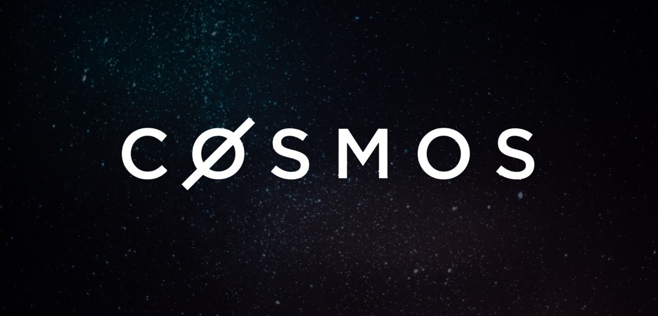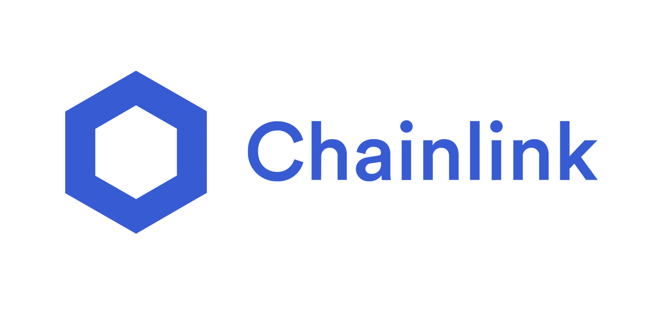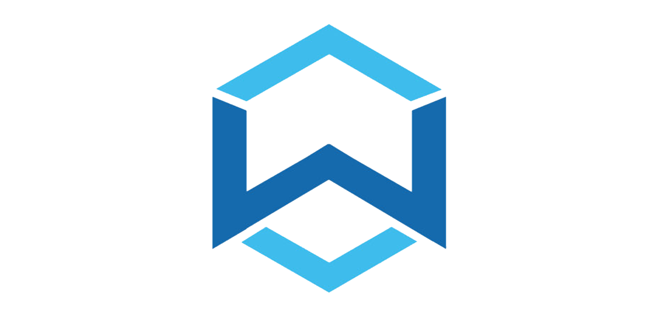 08 Aug 2024
08 Aug 2024The Importance of Interoperability in Web3: Connecting Blockchain Ecosystems

In the evolving landscape of blockchain technology, Web3 represents a decentralized internet where users have control over their own data, identity, and assets. Unlike the traditional Web2, which is characterized by centralized platforms, Web3 leverages blockchain technology to create an open, trustless, and permissionless network. This transformation aims to empower users, enhance privacy, and foster innovation through decentralized applications (dApps) and services.
Interoperability is a crucial component of Web3, enabling different blockchain networks to communicate, share data, and interact seamlessly. As blockchain ecosystems proliferate, each with its unique protocols and functionalities, the ability to connect these disparate systems becomes essential. Interoperability ensures that users can enjoy a unified experience across multiple platforms, enhances the efficiency of transactions, and promotes the integration of diverse blockchain-based solutions.

Understanding Interoperability in Web3
Interoperability in the context of Web3 refers to the ability of different blockchain networks to communicate, share data, and work together seamlessly. This concept is pivotal to realizing the full potential of a decentralized internet, where diverse blockchain ecosystems can co-exist and interact efficiently.
Interoperability is the capability of different systems, in this case, blockchain networks, to exchange information and utilize the exchanged data. In the Web3 landscape, it means enabling various blockchains to work together without needing an intermediary or central authority. This allows users to transfer assets, execute smart contracts, and access decentralized applications (dApps) across multiple platforms seamlessly.
Interoperability involves several key components:
-
Cross-chain communication includes protocols and technologies that allow one blockchain to send and receive information to and from another blockchain. This communication is fundamental for transferring assets and data across different blockchain networks.
-
Data sharing facilitates the exchange of information between blockchains, ensuring consistency and up-to-date records across all interconnected networks.
-
Seamless integration enables various dApps and blockchain services to work together, allowing users to interact with multiple dApps across different blockchains through a single interface, enhancing user experience and functionality.
Interoperability significantly enhances the functionality of dApps by allowing them to leverage the strengths of multiple blockchain networks. For instance, a dApp can use Ethereum for its robust smart contract capabilities, while simultaneously using another blockchain like Polkadot for its scalability. This interconnectedness not only improves the efficiency and performance of dApps but also expands their usability and reach.
By facilitating smooth interactions between different blockchains, interoperability supports the creation of more complex and versatile dApps, drives innovation, and fosters a more inclusive and integrated blockchain ecosystem.

Benefits of Interoperability in Blockchain Ecosystems
Interoperability in blockchain ecosystems offers numerous benefits that enhance the overall functionality, efficiency, and user experience of decentralized applications.
Enhanced Connectivity
Interoperability enables different blockchain networks to communicate and share data seamlessly. This connectivity allows for the transfer of assets, information, and functionalities across various platforms. Projects like Polkadot and Cosmos facilitate interoperability by allowing multiple blockchains to interoperate, fostering a more connected and cohesive blockchain ecosystem.
Increased Efficiency
By reducing fragmentation and siloed data, interoperability streamlines processes and reduces transaction costs. This efficiency is achieved by enabling seamless data exchange and coordinated operations across different blockchain networks. As a result, users and developers can enjoy faster, more cost-effective transactions and interactions.
Improved User Experience
Interoperability significantly enhances the user experience by enabling seamless interaction across multiple blockchain platforms. Users can access a broader range of services and functionalities without switching between different ecosystems. This convenience translates into a more user-friendly and functional environment, making it easier for end-users to engage with various blockchain applications.
Boosting Innovation
Interoperability facilitates the development of new applications and services by encouraging collaboration and integration between different blockchain projects. This collaborative environment drives innovation, as developers can build on the strengths of multiple platforms to create more sophisticated and versatile solutions. As a result, the blockchain ecosystem becomes more dynamic and capable of addressing a wider range of use cases.

Challenges to Achieving Interoperability
Achieving interoperability in blockchain ecosystems is not without its challenges. These obstacles span technical, security, and regulatory domains, each presenting unique hurdles that need to be addressed for seamless cross-chain communication and integration.
Technical Challenges
Differences in blockchain architectures and protocols pose significant technical challenges to interoperability. Each blockchain network may have its own unique structure, consensus mechanism, and data format, making it difficult to establish a common framework for interoperability. For instance, integrating a Proof-of-Work blockchain with a Proof-of-Stake network requires complex bridging solutions to ensure smooth data and asset transfers.
Security Concerns
Security is a paramount concern when dealing with cross-chain transactions and data transfers. Interoperability solutions must ensure that these interactions are secure and that the risk of malicious attacks is minimized. This includes safeguarding against vulnerabilities that could be exploited during the process of transferring assets or data between chains. Ensuring secure and reliable interoperability is essential to maintaining trust and preventing breaches that could undermine the integrity of the connected networks.
Regulatory and Compliance Issues
Navigating varying regulatory landscapes across different jurisdictions adds another layer of complexity to achieving interoperability. Each country may have its own set of regulations governing blockchain technology and digital assets, making it challenging to create interoperable solutions that comply with all applicable laws. Ensuring compliance while maintaining interoperability requires careful consideration of regulatory requirements and the development of adaptable frameworks that can meet diverse legal standards.

Key Projects and Protocols Driving Interoperability
Several key projects and protocols are at the forefront of driving interoperability within the blockchain space, each offering unique approaches to connecting different blockchain networks and enhancing cross-chain communication.

Polkadot
Polkadot is one of the most prominent projects focused on interoperability, offering a multi-chain framework that enables different blockchains to communicate and share data seamlessly. Its unique architecture, based on parachains and a central relay chain, allows for scalable and secure interoperability. Polkadot’s approach facilitates cross-chain transfers of any type of data or asset, making it a versatile solution for various blockchain ecosystems. The project’s key features include shared security, on-chain governance, and the ability to upgrade without hard forks, which collectively enhance the overall functionality and integration of connected networks.

Cosmos
Cosmos aims to create an "Internet of Blockchains" through its Inter-Blockchain Communication (IBC) protocol. IBC enables independent blockchains to communicate with each other, facilitating the transfer of data and assets across different networks. Cosmos’s approach to interoperability emphasizes scalability, customization, and sovereignty, allowing blockchains to operate independently while still benefiting from the ability to interact with other chains. Use cases include decentralized finance (DeFi) applications, cross-chain token transfers, and more, demonstrating the practical impact of Cosmos’s interoperability solutions in the blockchain space.

Chainlink
Chainlink focuses on providing secure and reliable cross-chain data sharing through its decentralized oracle network. Oracles are crucial for enabling smart contracts to interact with real-world data, and Chainlink’s decentralized approach ensures that this data is trustworthy and tamper-proof. By facilitating the flow of information between different blockchains and external data sources, Chainlink plays a critical role in enhancing interoperability. Its partnerships with various DeFi platforms and enterprises underscore the real-world applications of its technology, ranging from decentralized finance to insurance and beyond.

Wanchain
Wanchain offers a comprehensive interoperability solution aimed at enabling cross-chain transactions and decentralized finance (DeFi) applications. By creating bridges between different blockchain networks, Wanchain allows assets and data to be transferred seamlessly across chains. This capability is particularly valuable in the DeFi space, where the ability to move assets between platforms can enhance liquidity, access to financial services, and overall market efficiency. Wanchain’s focus on cross-chain transactions positions it as a key player in the drive toward a more connected and integrated blockchain ecosystem.
These projects and protocols are instrumental in overcoming the technical and structural barriers to interoperability, fostering a more connected and efficient blockchain ecosystem. Through their innovative approaches, they drive the adoption of blockchain technology across various industries, unlocking new potentials for decentralized applications and services.

Future Trends and Developments
As blockchain technology continues to evolve, several emerging trends and developments are set to shape the future of interoperability in the Web3 ecosystem.
Emerging Technologies
Innovations in cross-chain communication and data sharing are at the forefront of advancing blockchain interoperability. Technologies such as zero-knowledge proofs and advanced cryptographic methods are enhancing the security and efficiency of cross-chain transactions. Additionally, the potential impact of quantum computing on interoperability cannot be ignored. Quantum computing promises to revolutionize data processing and encryption, potentially creating new paradigms for secure and efficient blockchain communication.
Standardization Efforts
The drive towards creating interoperability standards is gaining momentum within the blockchain industry. Various industry consortia and working groups are collaborating to develop standardized protocols and frameworks that facilitate seamless interaction between different blockchain networks. These efforts aim to reduce fragmentation and ensure that diverse blockchain ecosystems can communicate and operate cohesively. Standardization is crucial for achieving widespread adoption and ensuring that the benefits of interoperability are realized across the board.
Predictions for the Future
The future of blockchain interoperability is poised for significant advancements. As technological innovations continue to emerge, we can expect more robust and scalable interoperability solutions. These advancements will likely lead to enhanced efficiency, security, and functionality in blockchain ecosystems. In the long term, interoperability will play a pivotal role in the growth and maturation of the Web3 ecosystem, fostering a more interconnected and collaborative blockchain industry. This interconnectedness will enable the development of more complex and innovative decentralized applications, driving further adoption and integration of blockchain technology across various sectors.

Conclusion
Interoperability is essential for the growth and maturation of Web3. It enables different blockchain networks to work together seamlessly, enhancing the functionality and usability of decentralized applications. As the blockchain industry continues to innovate, the development of robust interoperability solutions will be crucial in ensuring the long-term success and integration of blockchain technology.
The future of interconnected blockchain ecosystems holds immense potential for further innovation and adoption. By embracing interoperability, the blockchain industry can unlock new opportunities and create a more efficient, secure, and user-friendly digital landscape.

 Get RateX Pro
Get RateX Pro
 06 Jun 2024
06 Jun 2024



